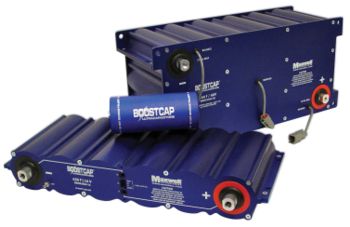Zenn gearing up for EEStor-powered car
Toronto-based electric vehicle maker Zenn Motor (TSX: ZNN) is moving forward with plans for a
highway speed vehicle to be powered by EEStor in Cedar Park, Texas, announcing plans to roll out the
new cars in the fall of 2009.
"We need to move away from chemical battery technology to a whole new way of storing energy for
electric vehicles, with a solid infrastructure to support global roll out," said Ian Clifford, CEO of Zenn,
at the company's annual general meeting.
"Through their massive improvements on energy storage and power density, EEStor will virtually
eliminate all of the shortcomings of existing and proposed chemical battery technology."
Secretive ultracapacitor firm EEStor, backed by Zenn and Kleiner Perkins Caufield & Byers, is
developing a solid-state electrical energy storage unit which it says will be longer lasting, lighter, more powerful, and environmentally friendly than current battery technologies.
"EEStor's technology is a tenth the weight and volume of lead-acid batteries, and significantly smaller
than the most advanced chemical batteries today," said Clifford.
Zenn said EEStor has publicly committed to commercialization in 2008, and that EEStor's first
production line would be used to supply Zenn.
EEStor granted worldwide exclusive licenses for its storage units to Zenn for use in car conversions as
well as for new small and medium-sized low speed and highway capable vehicles, but EEStor has
already made at least one deal for other uses of its technology.
The highway speed vehicle, to be called the cityZenn, will have a top speed of 80 miles per hour and a range of 250 miles, according to Zenn. The company said the EEStor powered car will be rechargeable in less than 5 minutes.
Zenn did not disclose a price for the new car, but Clifford said it would be cost-competitive with combustion engine vehicles.



